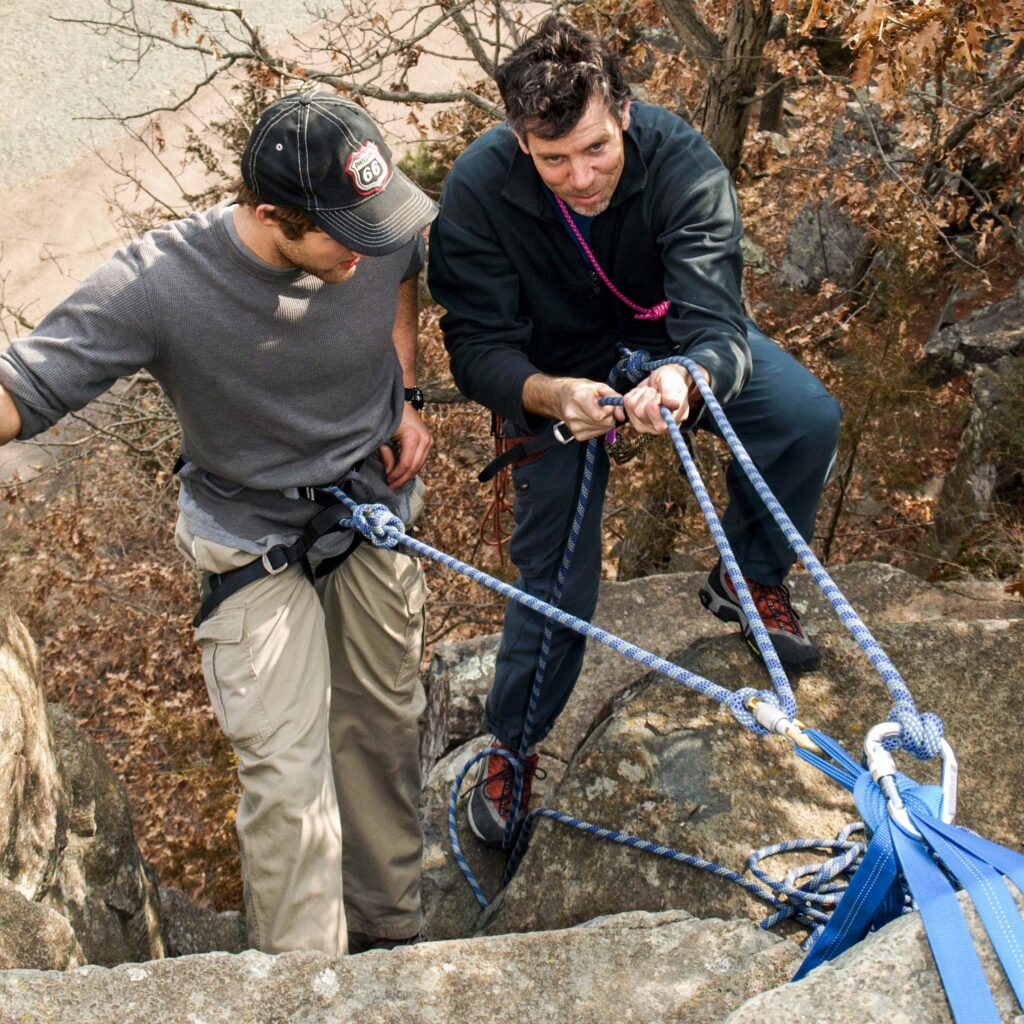What is a Kilonewton and Why is it Important for Climbers to Know?

Have you ever looked at your climbing equipment (carabiners, quickdraws, slings, etc.) and noticed a number with a “kN” following it? That is the symbol for a kilonewton or kilo-newton, which is a measurement to quantify force. Climbing, whether it be rock climbing, mountaineering, or indoor climbing, is a captivating and challenging pursuit that demands physical strength, technical skill, and mental fortitude. As climbers navigate vertical terrains, the concept of force becomes vital, particularly when it comes to understanding the forces exerted on your safety equipment, gear, anchors, and your body during climbing. Let us look at the relationship between these forces, kilonewtons (kN), and climbing, exploring their significance, applications, and how they impact your enjoyment of the sport.
Understanding Kilonewtons in Climbing:
In the context of climbing, kilonewtons (kN) are used to measure forces acting on various elements of the climbing system, such as ropes, anchors, and protection devices. A kilonewton is equal to 1,000 newtons (N), named after the English scientist Sir Isaac Newton. The newton is the International System of Units measurement of the force required to accelerate a mass of one kilogram by one meter per second. By quantifying forces in kilonewtons, climbers can assess the loads experienced by their equipment and ensure the safety and integrity of their systems.
The forces encountered in climbing can be substantial, especially during falls or when a climber is caught by a rope or anchor system. In such situations, the forces exerted on the equipment are measured in kilonewtons. For instance, if a climber falls and the rope dynamically arrests the fall, the impact force experienced by the climber and the equipment can be several kilonewtons.
The strength and design of climbing equipment, including ropes, carabiners, harnesses, and anchors, are carefully engineered to withstand these forces. Manufacturers provide load ratings and maximum allowable forces in kilonewtons to guide climbers in selecting appropriate gear and ensuring its durability under stress.
Dynamic vs. Static Forces:
In Climbing, forces can be categorized as either dynamic or static. Dynamic forces are created during falls or when the climber applies a sudden load on the system and the entire system works together to absorb and dissipate the forces exerted by the fall. The energy of a dynamic force causes an object or objects to vary or change its size, position, or direction. Therefore, the energy created by the force of the fall is transferred or shared by the objects in the system. This force is measured in kilonewtons and can be several times the climber’s body weight. Climbing ropes, for instance, have dynamic elongation properties that allow them to withstand and disperse the energy generated by these forces, reducing the impact on both the climber and the gear.
On the other hand, static forces refer to the sustained loads on the climbing system when the climber is at rest or during gradual movements. In other words, a static object retains the force exerted upon it. An object attached to a static rope will feel the full impact of the force of a fall. These forces are also measured in kilonewtons and are influenced by factors such as the climber’s weight, the angle of the force exerted on the object, and the type of material used. Understanding and managing static forces is crucial for climbers to assess the strength and reliability of anchors, ropes, and other gear.
For example, the rope used for climbing must be dynamic. Meaning that it is designed to stretch or elongate when weighted, which absorbs and dissipates the force of the fall. This reduces the impact force on the climber and the gear when it is weighted or loaded during a fall. High impact forces are harmful on the climber’s body, the equipment, and anchors. However, you generally do not want extension in anchor systems in order to retain the integrity and maximize the strength of the anchors. Therefore, static line, cord, or webbing is usually utilized when building anchors.

Anchor Strength and Load Distribution:
In traditional climbing or when setting up top rope systems, climbers rely on anchors to secure the rope and protect against falls. The strength and load-bearing capacity of these anchors are paramount for safety. Kilonewtons are used to measure the maximum load that an anchor can sustain before failing. Climbers evaluate factors such as the rock quality, placement technique, and the direction of force to ensure the anchor can withstand the forces involved.
Load distribution is another critical aspect in climbing systems. When a climber falls or applies force to the system, the load is distributed among the various anchors and protection points. The aim is to distribute the forces evenly to prevent overloading any single anchor point. By understanding the kilonewton measurements, climbers can calculate the anticipated forces and design their systems, accordingly, taking into account redundancy and backup options.
Safety Standards and Testing:
The climbing industry has established safety standards and testing protocols to ensure the reliability and performance of climbing equipment. These standards often specify load tests in kilonewtons to evaluate the strength and durability of gear. Climbing ropes, carabiners, harnesses, and other safety equipment are required to have this information imprinted on them or listed along with the manufacturer’s specifications.
The kN (kilonewton) is a vital piece of information for climbers. However, to fully understand its importance, you enter the wild world of physics. You should never use a piece of gear or equipment without knowing its force and load capacity. (Yes, there is some suspect gear out there that should NEVER be used for climbing). Knowing what to look for and how to use climbing gear is essential. That is why expert instruction is so important. Vertical Endeavors has lessons, both for indoor and outdoor climbing, that will explain these safety features in further detail and show you how to apply that knowledge.
Climbing is dangerous, it involves inherent and other risks and cannot be eliminated. The information presented here does not describe all of the risks associated with climbing and is not intended to replace or supersede expert instruction and training.
© 2023 Vertical Endeavors, Inc. All rights reserved. The contents of this article, photographs, and graphical representations are protected by U.S. and International copyright laws. Reproduction and distribution, in part or whole, without written permission from Vertical Endeavors are prohibited. The opinions and information contained in this article are for entertainment and informative purposes. They are those of the author and may not represent those of Vertical Endeavors, and do not necessarily reflect the ideas, ideologies, opinions, or points of view of the organization, affiliates, owners, stockholders, partners, suppliers, licensors or staff. Under no circumstances shall Vertical Endeavors or any entity that are, have been, or will be affiliated be liable for any indirect, incidental, consequential, special, or exemplary damages arising out of or in connection with the information contained in this article.

